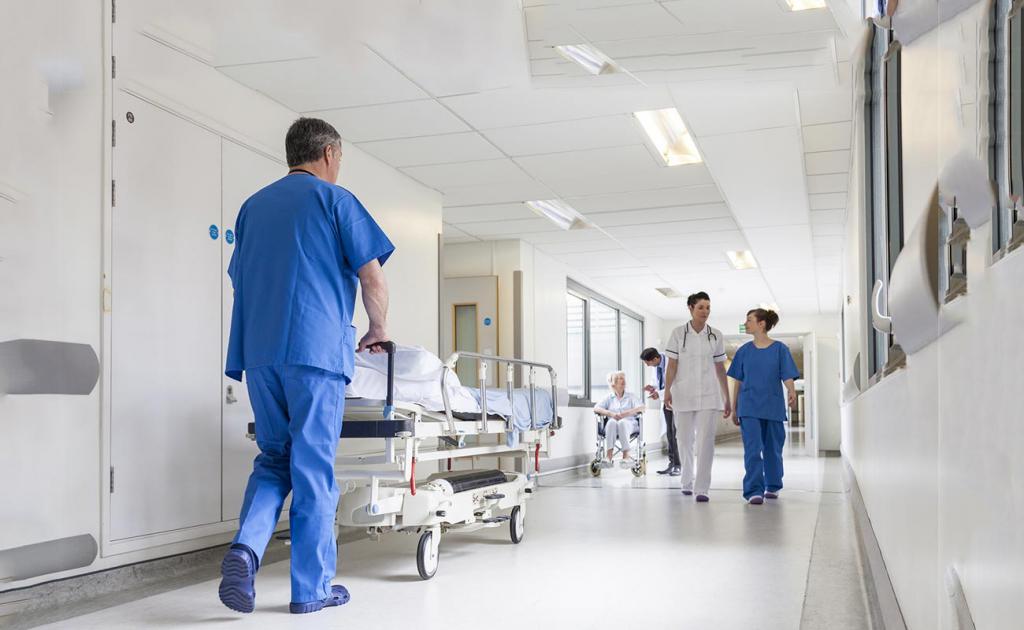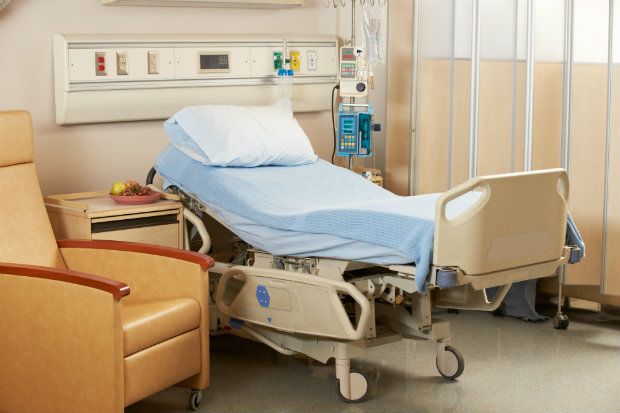In the article, we consider the main reasons for the growth of nosocomial infections (nosocomial infection).
They can be divided into objective, which do not depend on medical personnel and heads of medical institutions, and subjective, which directly depend on the leadership of medical organizations and personnel. The reasons and factors contributing to the growth of nosocomial infections are presented in more detail later in the article.
Objective factors and conditions
Consider the objective first. These reasons for the growth of nosocomial infections include the following:
- The existence of a number of departments and hospitals that do not meet modern sanitary and regulatory requirements.
- An increase in the number of contacts between sick people and patients with staff.
- Lack of effective therapeutic methods against staphylococcal carriage and normalization of conditions for hospitalization.
- Poor equipment of modern bacteriological laboratories and the availability of their specialists, bacteriologists, junior and secondary medical personnel.
- Unjustifiably widespread use of antibacterial drugs in animal husbandry, medicine, and the manufacture of food products.
- An increase in the number of people with a reduced immune response (patients with chronic diseases, premature infants, senile people).
- Multiple antibiotic resistance of pathogenic microorganisms.
- The increase in the appeal for inpatient care.
- The expansion of the spectrum and the complication of surgical interventions that contribute to a decrease in the immune response.
Subjective factors and conditions
What is included in this group? The list of subjective reasons for the growth of nosocomial infections includes the following:
- Insufficient preventive orientation of work and professional training of specialists, as well as medical personnel of the middle category.
- The lack of a single epidemiological approach to the study of nosocomial infections.
- Lack of methods for reliable sterilization of certain types of medical equipment, as well as insufficient control over the quality of disinfection and sterilization.
- The increase in cases of undiagnosed carriage among medical personnel.
- Insufficient provision of medical institutions with junior and middle medical staff.
- Lack of reporting and full accounting for nosocomial infections.
- Imperfection of the system of visits by critically ill relatives.
- Poor relationship between hospitals, masking cases of nosocomial infections in stationary conditions.
- Ignorance by many hospital workers of the true extent of the growth and spread of nosocomial infections and their economic and social consequences.
Other factors
It should be noted that one of the main and first reasons for the growth of nosocomial infections in the second half of the 20th century was the unjustified, often without sufficient justification, widespread use of antibacterial drugs in medical practice. It is necessary to emphasize the mistake of medical services - this is over-the-counter leave to people of antibiotics several decades ago and their exclusively improper use for non-medical purposes: feed biomycin (in animal husbandry), in the production of industrial and food products, etc.
Pathogen Resistance
Unfortunately, this factor has played and continues to play an extremely important role in increasing the prevalence of infections caused by pathogens that are widely resistant to antibacterial substances and other chemotherapy drugs.
Pathogenic microorganisms have increased variability and, like no other creature in nature, is quite rapidly adaptable to changing adverse environmental conditions.
What causes the variability of microorganisms?
The variability of pathogens is caused by induced and spontaneous mutations and various other phenomena of variability: transduction, transformation, conjugation, variability due to plasmids, recombinations, etc. Such a rapid development of adaptability to adverse conditions is due to the following properties:
- extremely fast propagation - division occurs in the range of 20 minutes, therefore, there can be up to 70 or more generations per day - from here, every 10 sepsis patient may have 10 10 bacterial cells;
- a huge number of mutant cells, which is due to genetic changes in pathogenic bacteria - in a population of 1012-1013 bacteria only spontaneous mutants will have 105-106 individuals, and if you take into account the number of induced mutants, then they are two orders of magnitude more;
- increased interspecific and interclonal variability, which is based on the propagation of heterogeneous populations of pathogenic microorganisms and is supported by genetic exchange - a high frequency of recombination, which can justify their going beyond the species;
- intraclonal variability, which is provided by the processes of heterogeneity generation due to genetic rearrangements in microbial individuals of certain populations;
- all of the above leads to an increase in the heterogeneity of the nosocomial microbial populations, the emergence of individuals adapted to new, special living conditions in hospitals;
- activation of dangerous virulent individuals, their selection and rapid accumulation and reproduction, and subsequently distribution among patients, leads to the development of a negative epidemic situation, which leads to an increase in the incidence of nosocomial infections.

Thus, the main reasons for the growth of nosocomial infections of nosocomial infections, the wide spread and increase in the incidence and complexity of the infection process include:
- change in the properties of bacteria - causative agents of nosocomial infections;
- a decrease in hereditary immunity and the ability to have the correct immune response to ingestion of causative agents of nosocomial infections in some population groups at risk, especially for hospital patients.
Health care facilities
MPIs are medical institutions. Depending on the type of assistance provided, they are divided into outpatient, inpatient and spa resorts.
Treatment-and-prophylactic care is the state system of universal provision of the population with all types of qualified medical care, including a full range of medical-diagnostic and preventive measures.
Some reasons for the growth of nosocomial infections in health facilities
The increase in nosocomial infections here is due to the following negative factors and conditions for the organization of medical activity:
- insufficient material and technical base;
- lack of sterilized medical instruments and equipment - both disposable and reusable;
- deficiency of linen, disinfectants and detergents;
- gross violations of the rules of antiseptics and asepsis;
- violation by the medical personnel of the anti-epidemic and sanitary regime, as well as sanitary and hygienic rules;
- violation of the rules for sterilization and disinfection of medical equipment and instruments;
- untimely isolation of patients and aftercare in stationary conditions;
- violations of the cyclical filling of hospital wards;
- interruptions or complete lack of provision of cold or hot water;
- insufficient staffing of a specific health care facility.
Every healthcare provider should be aware of the reasons for the increase in nosocomial infections. Tests that should be carried out during employment will help to identify the awareness of health care personnel.
Decreased immunity and increased nosocomial infections
The main reasons for the decrease in the immunobiological protective forces of people at risk and the eliminating ability of pathogens are:
- a significant increase in nosocomial infections among elderly patients whose immune system functionality is greatly reduced in comparison with patients of mature and young age;
- decrease in immunobiological forces and the effective functioning of the immunocompetent organs of patients under the influence of radiation, various chemicals: pesticides, herbicides and others;
- due to the decrease in immunity among people in recent years and the increase in antibiotic resistance of pathogens, there is a significant increase in chronic infectious diseases, as well as non-infectious pathologies, the length of hospital stay of patients is lengthened, and, in connection with this, the number of nosocomial infections increases significantly;
- an increase in cases of violations of the integrity of the skin and mucous membranes, which contributes to the penetration of causative agents of nosocomial infections into the microbial and sterile areas of the human body due to endoscopic, clinical, instrumental, biochemical and other diagnostic methods;
- the introduction into medical practice of drugs that suppress acquired and natural immunity to antigens of microbes of the nosocomial infections (immunosuppressants, cytostatics, antibiotics, X-ray and radiological effects, etc.);
- the development by pathogenic microorganisms of new habitats in which local immunity to new pathogens is imperfect;
- a decrease in immunity due to the expansion of the spectrum and an increase in the number and complexity of surgical interventions, extensive tissue damage due to injuries, tissue innervation, with microcirculatory dysfunction, acidosis and hypoxia;
- high susceptibility of hospital patients to virulent and pathogenic microorganisms (to the influenza virus and other pathogens of acute respiratory viral infections, to strains of salmonella tifimurium, hepatitis B virus, enteropathogenic types of E. coli, to strains of Klebsiella, staphylococci, pseudomonads, etc.);
- penetration into the wounds and organs of stationary patients of large numbers of causative agents of nosocomial infections - are influenced by mental and physical factors that adversely affect patients.

Conclusion and main findings
The article gives a detailed answer about the reasons for the growth of nosocomial infections. Nosocomial infection is any infectious disease that a patient becomes infected with while in the hospital. Also, an infectious disease of a health worker that he received at this institution can be attributed to this.
To minimize the risk of the occurrence and spread of nosocomial infections, modern highly effective means and equipment for disinfecting surfaces and air must be developed and put into practice.